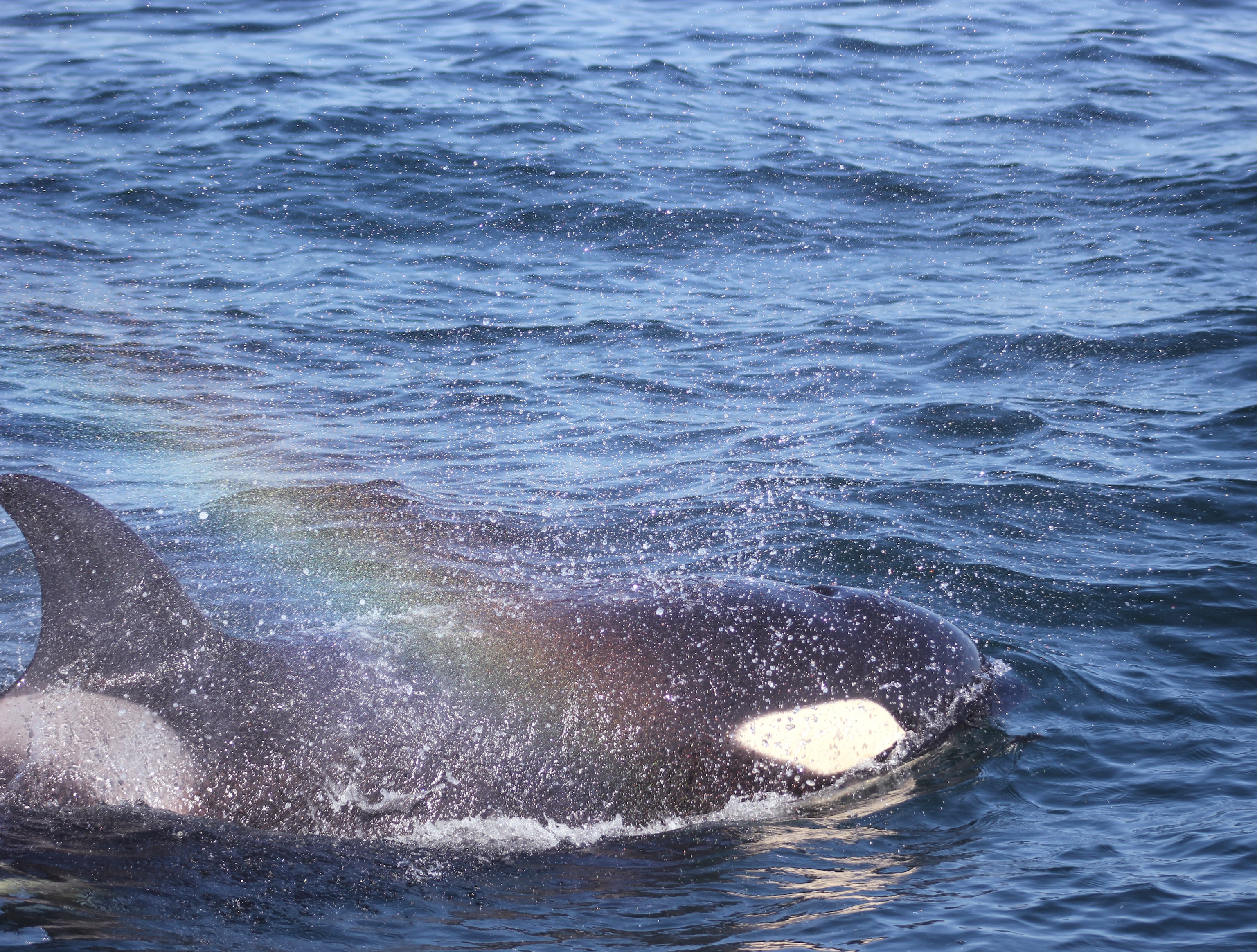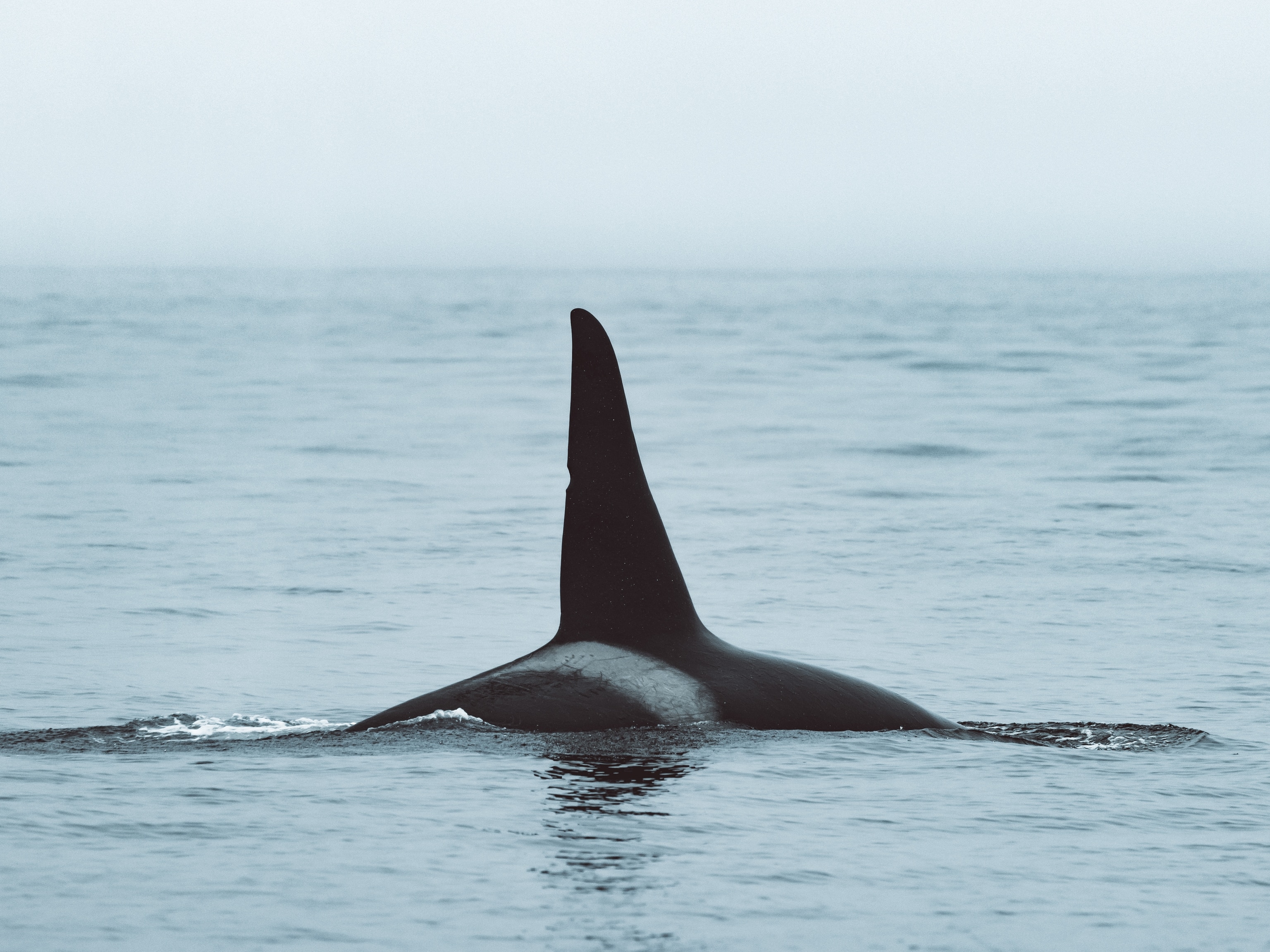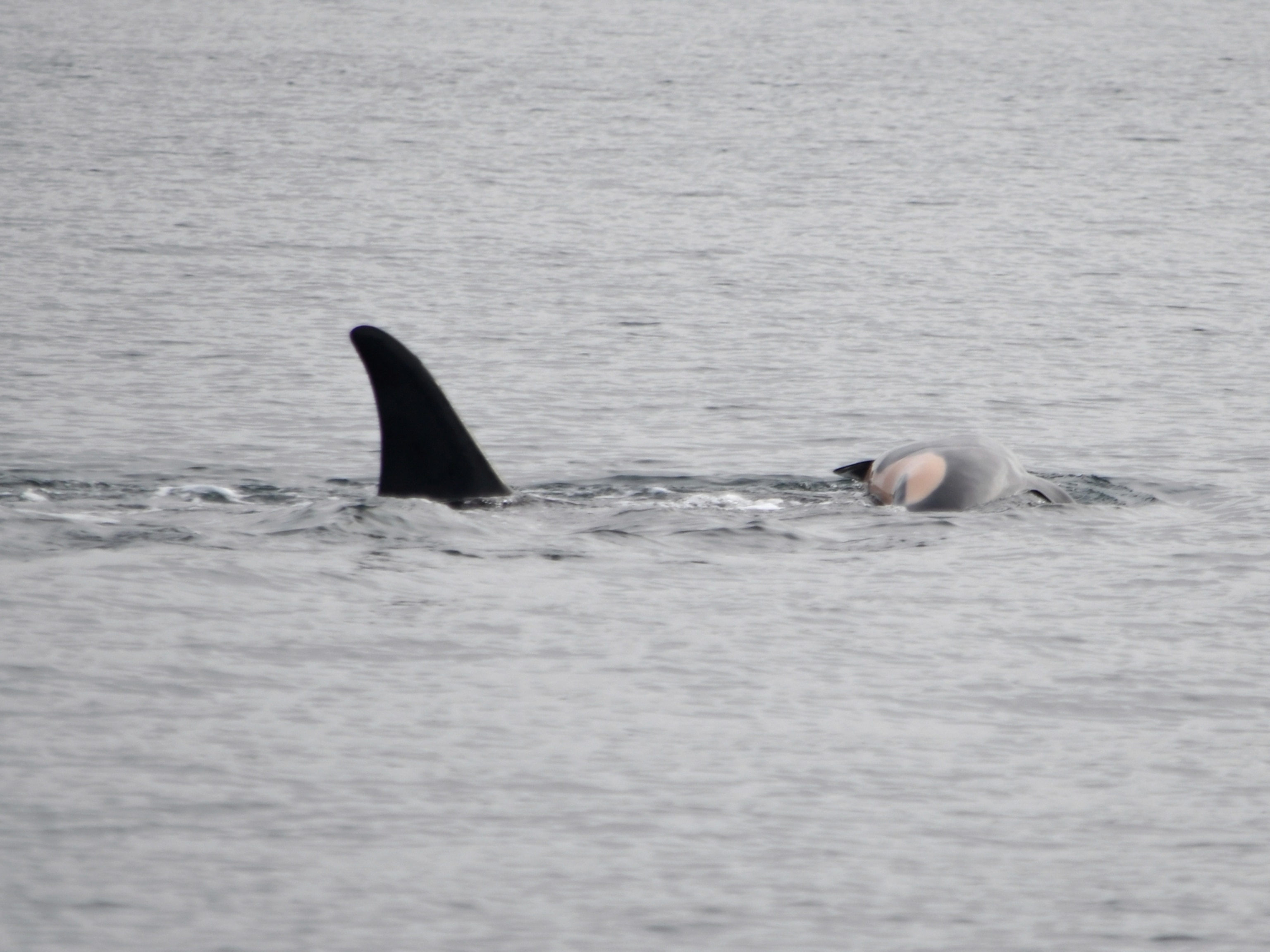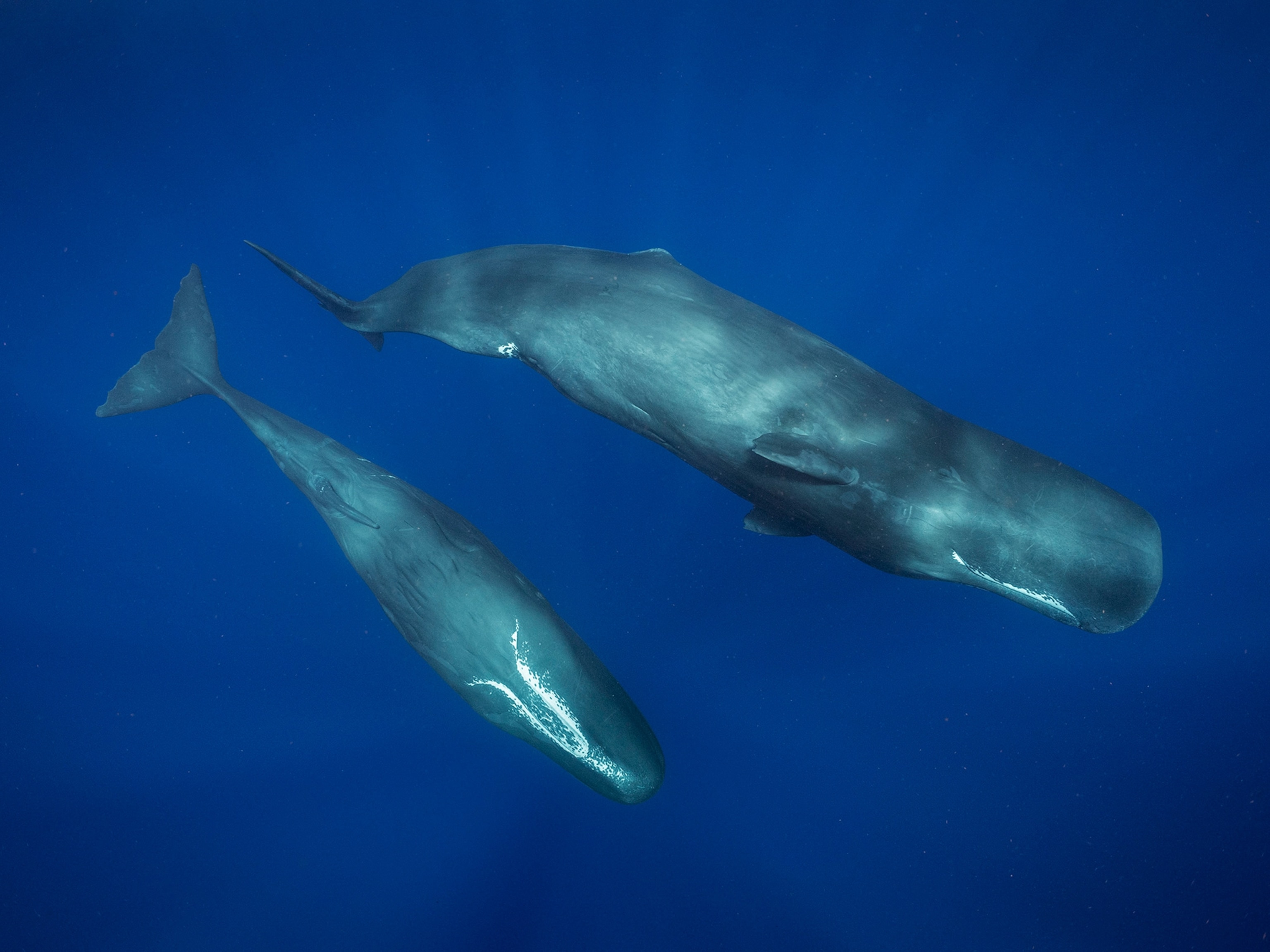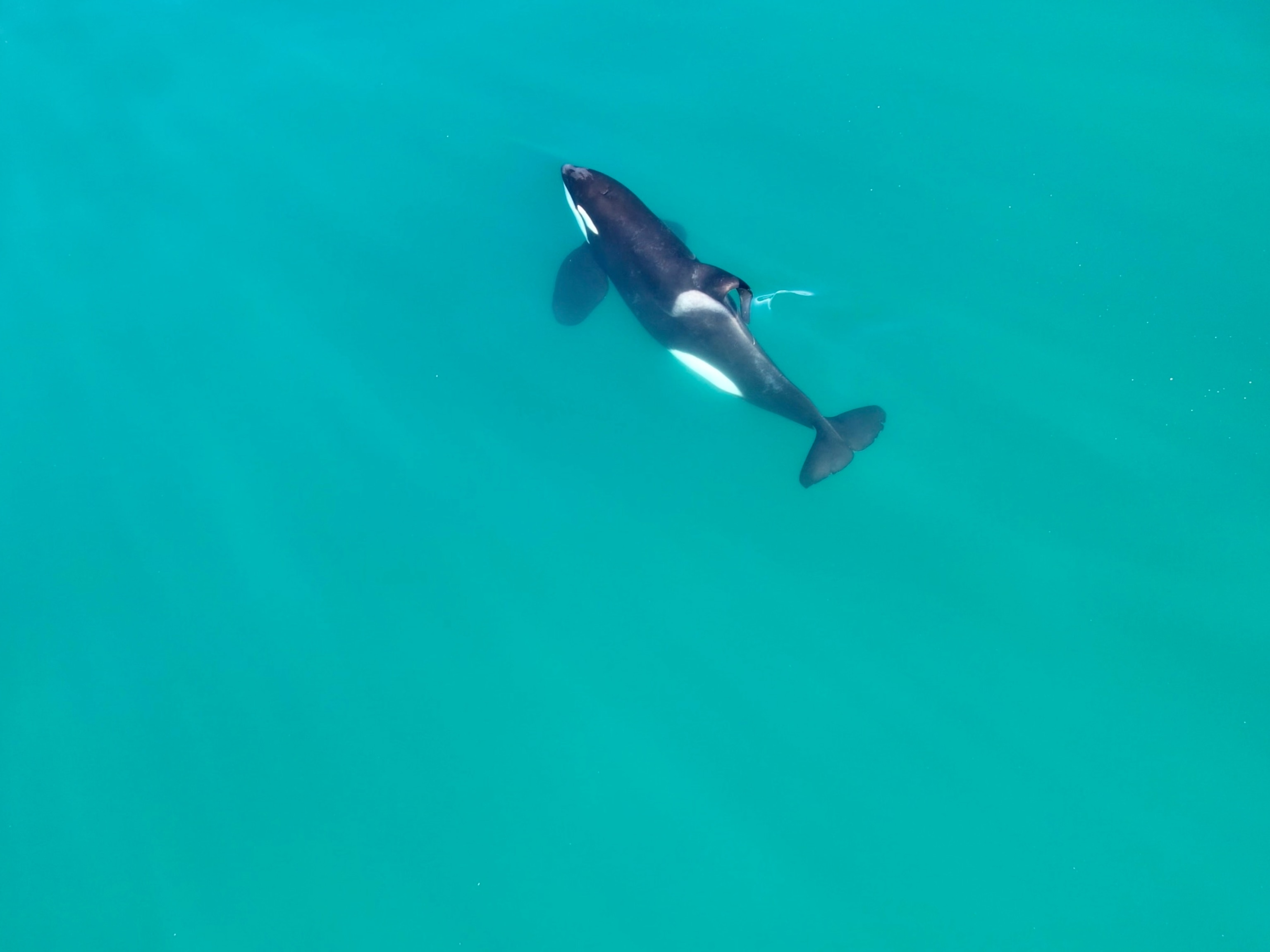
You are what you eat—and for orcas, that’s bad news
Killer whales have toxic chemicals in their bodies. A surprising new study shows that their diet seems to be the culprit.
Researchers have known for decades that orcas across the North Pacific have harmful pollutants in their system.
Now, a new study reveals orcas in the western North Atlantic, including those in the Arctic, are significantly more contaminated than animals in the east—a finding that “shocked” study leader Anaïs Remili, a postdoctoral researcher at McGill University in Montreal. The research strongly points to their diet playing a major role in the level of pollutants, rather than their location.
The study looked at the presence of persistent organic pollutants, or toxic chemicals that degrade slowly and accumulate in the body, in the blubber of orcas across the North Atlantic. These pollutants, relics of industrial and agricultural processes, “have a nasty tendency to bind to fat,” says Remili, whose study was published in October in the journal Environmental Science & Technology. These chemicals weaken orcas’ immune systems, disrupt their endocrine function, impede growth and brain development, and even interfere with reproduction. (Read more about the impact of pollution on orca populations.)
Contaminants amplify as they move up through the food chain, and the orcas that consume top predators—for example, those that primarily eat other marine mammals rather than fish—are most polluted. Thanks to their high body fat and position as apex predators, orcas are some of “the most contaminated animals on the planet,” Remili says.
Her earlier research showed that eastern North Atlantic orcas primarily feed on herring; mid-North Atlantic orcas feed on seals and mackerel; and western North Atlantic orcas feed on baleen whales, porpoises, belugas, narwhals, and seals.
It makes sense that western North Atlantic orcas would have higher pollutants, due to their diet, but “you would expect less contaminants overall in the Arctic compared to industrialized areas,” such as off the east coast of North America, Remili says. She was also surprised to discover that some orcas had a pollutant concentration of more than 90 parts per million, which is more than double the maximum threshold determined to cause reproductive failure in marine mammals.
“We’ve really come to learn that you are what you eat,” says Peter Ross, senior scientist and healthy waters program director at the Raincoast Conservation Foundation in British Columbia, who wasn’t involved in the study. “The top of the food chain, as exemplified by these long-lived killer whales, is extremely vulnerable.”
A ‘nail in the coffin’
For the study, researchers collected blubber samples from 162 orcas of varying ages and sexes across the North Atlantic, including the Canadian Arctic, Greenland, Iceland, Norway, and the Faroe Islands. The samples were obtained between 2008 and 2022 through various methods—some were taken from boats via harmless biopsy-collecting darts, and others were collected from harvested or stranded individuals. The team then analyzed some of the samples’ contaminant levels in the lab.
Ross, whose research in 2000 first established that orcas carried pollutants, wonders to what extent age might have influenced the apparent higher pollutant levels in the western North Atlantic orcas. Older orcas have more pollutants in their system after “accumulating a lifetime of contaminants,” possibly as long as 90 years. Orca calves are also particularly susceptible since they nurse; a calf “is actually one step higher in the food chain than its mother,” Ross says.
Overall, he says this study is another “nail in the coffin” showing the effects of these persistent chemicals in the environment. “The oceans are not limitless, nor is the planet.”
While scientists lack evidence to determine whether these pollutants are affecting reproductive rates now, this will likely affect them in years to come. The contaminants’ impacts are compounded by other pressures, including noise disturbance and the low availability of quality prey, and some populations “are not going to be able to recover and/or grow over time,” says Tanya Brown, a research scientist at Canada’s Fisheries and Oceans department studying the effects of contaminants on orca health.
With only 73 animals left in the fish-eating southern resident killer whale population, which lives off the Pacific Northwest, “those cumulative pressures are ultimately leading to [its] demise, potentially.”
‘Majestic animals’
In the 1940s, an industrial boom that relied on pesticides, coolants, and flame retardants spread many of these pollutants throughout the environment, according to the U.S. Environmental Protection Agency. In 2001, the United States and more than 90 other countries signed a United Nations treaty agreeing to stop using certain chemicals and to destroy stockpiles, but many of these remain, likely leaking pollutants. Even though many of these chemicals were banned more than 50 years ago, they’re still “wreaking havoc” on orcas’ health, Brown says.
As climate change worsens, so might orca pollution. For instance, warmer Arctic waters may draw more orcas north, where they’ll feed on high-fat marine mammals, Remili speculates.
“It tells us that we need to start acting now,” Remili says. She calls on countries to destroy toxic waste sitting in warehouses around the world and prevent new contaminants from being released.
“Killer whales are majestic animals,” she says. “If we don't have killer whales anymore, our ecosystems are going to be completely out of balance.”


